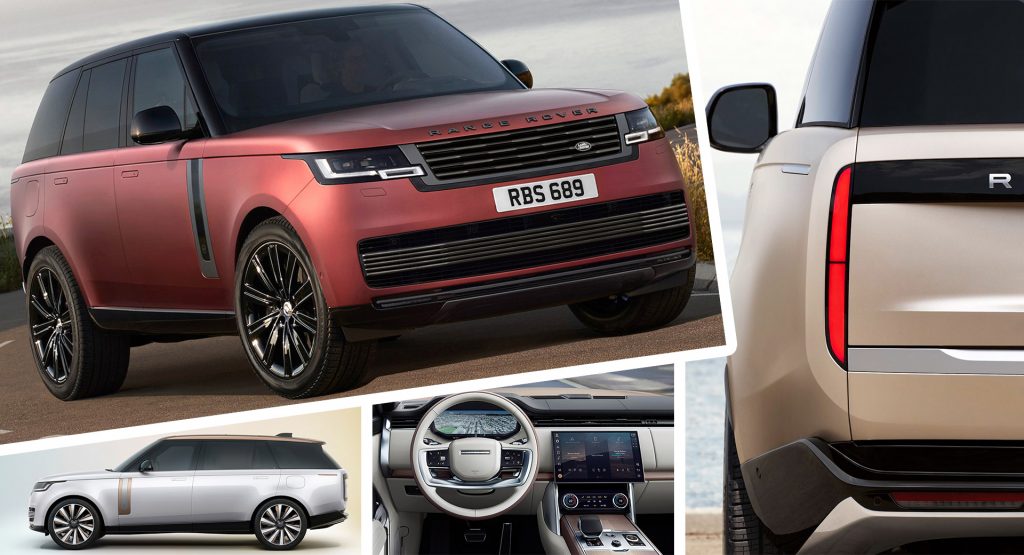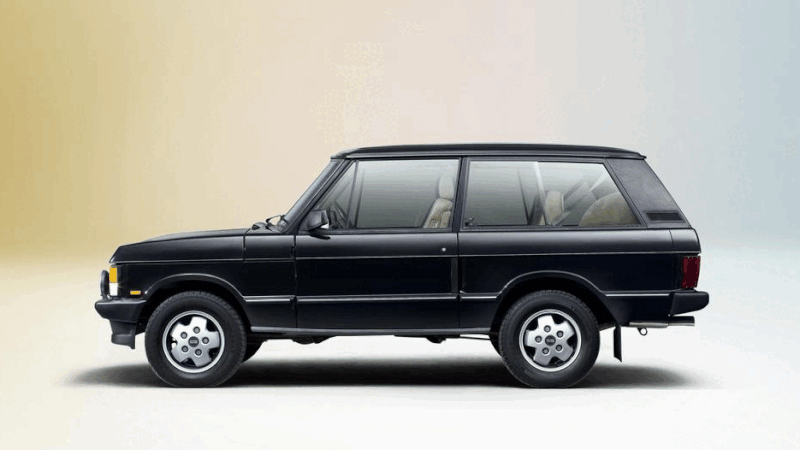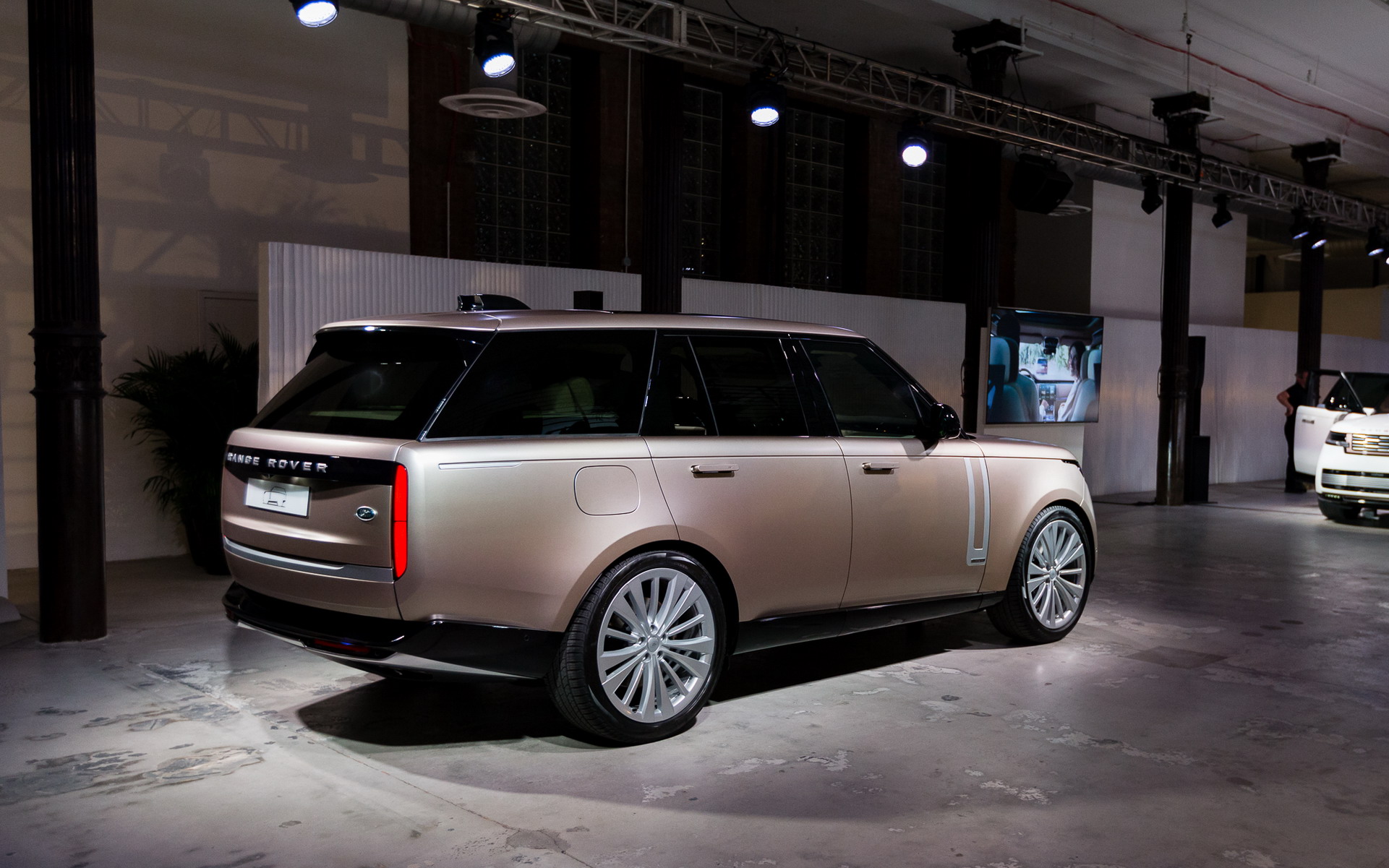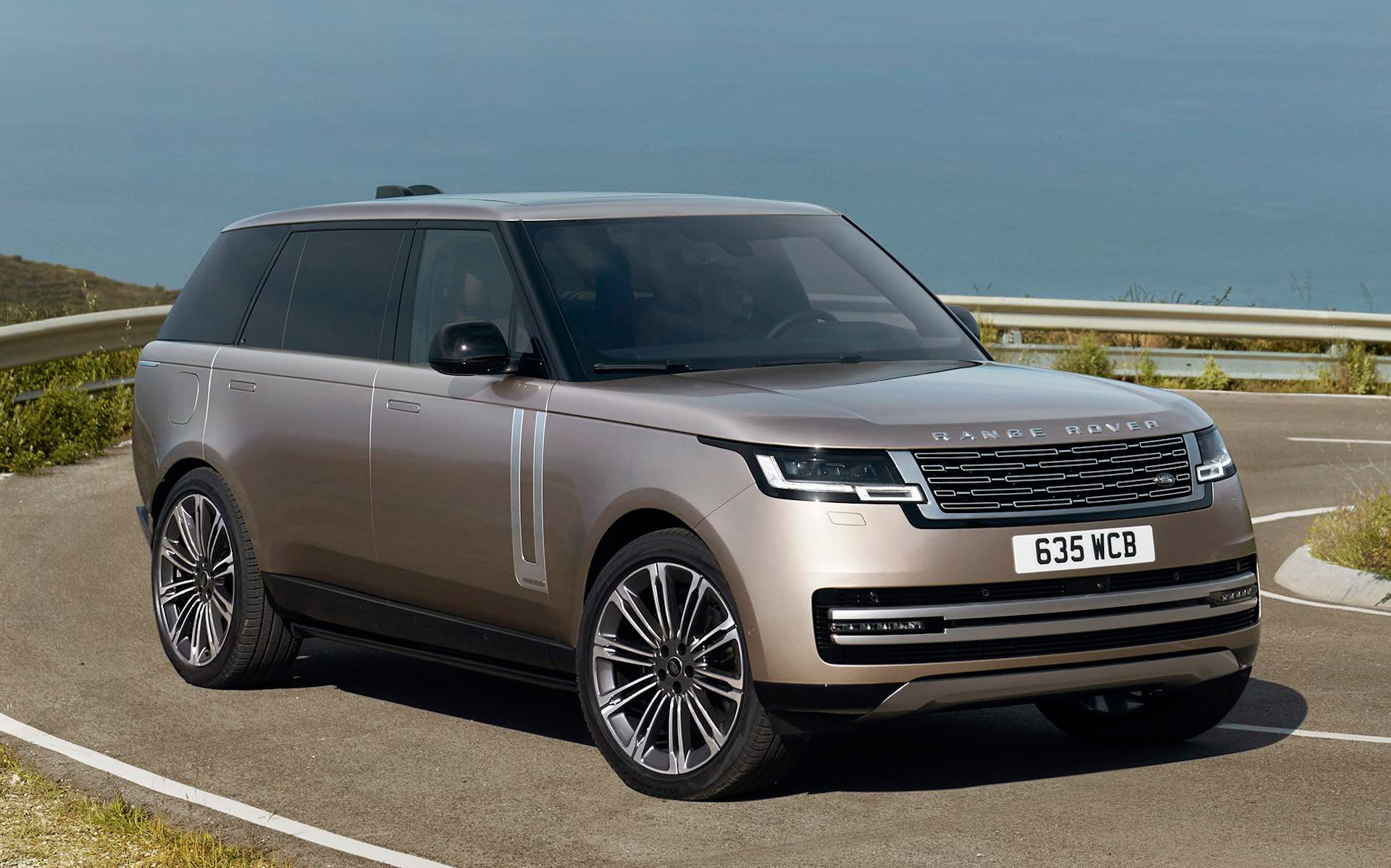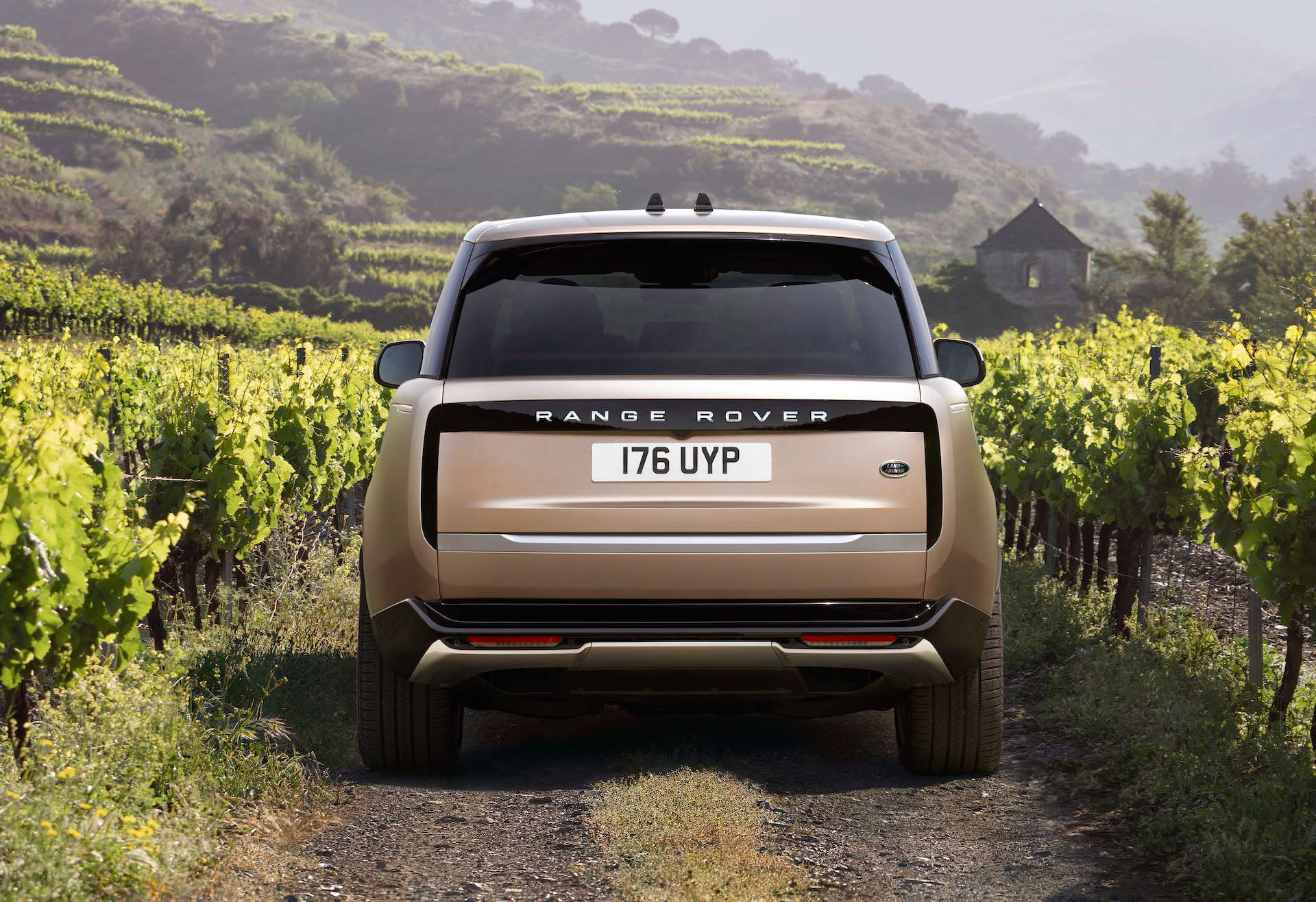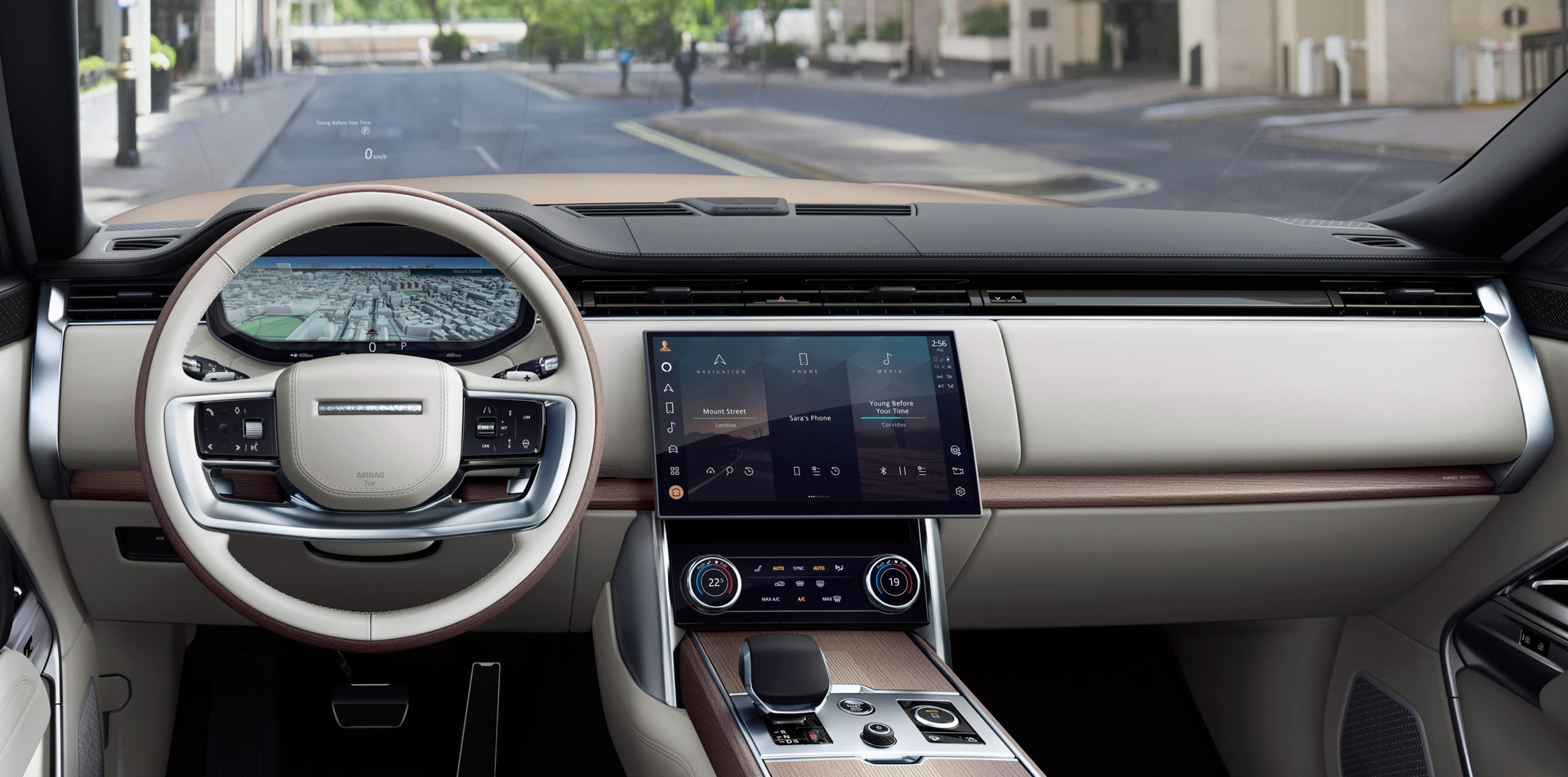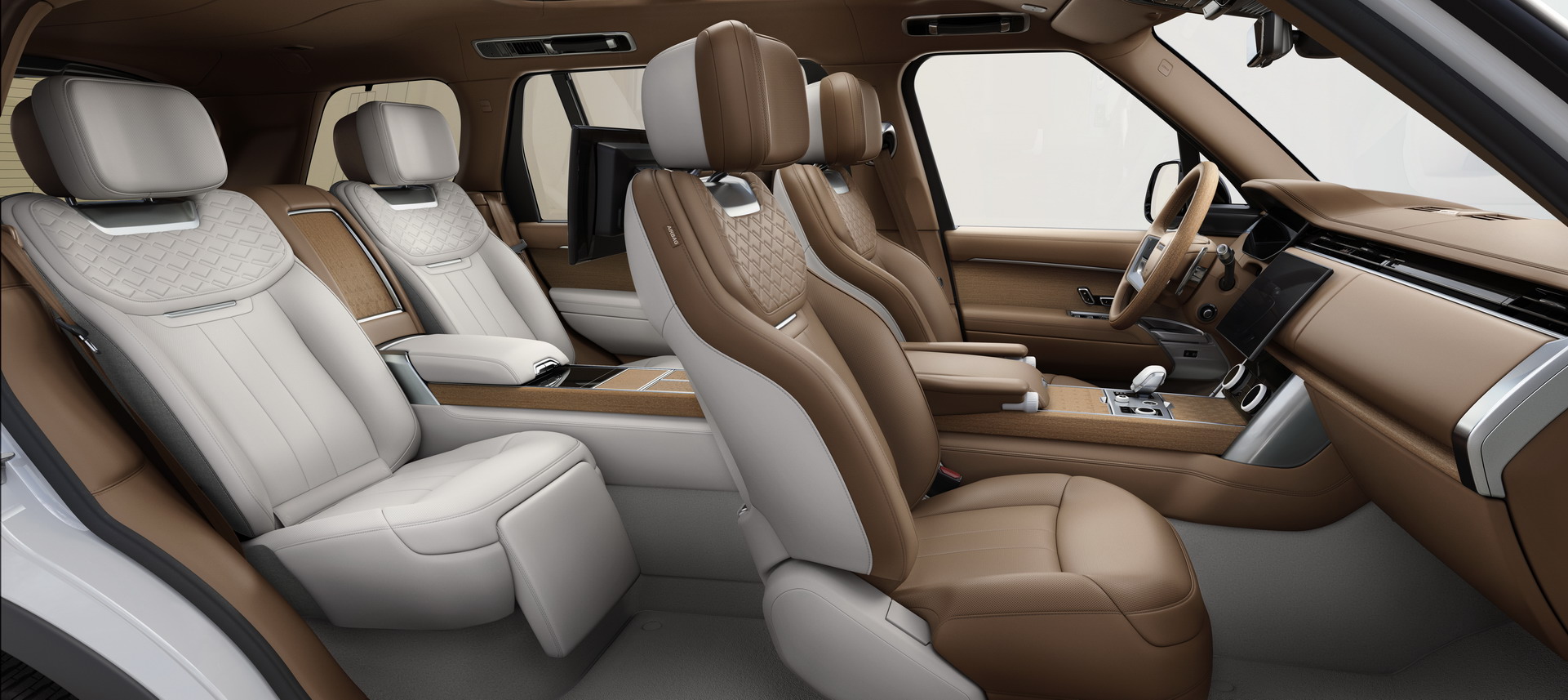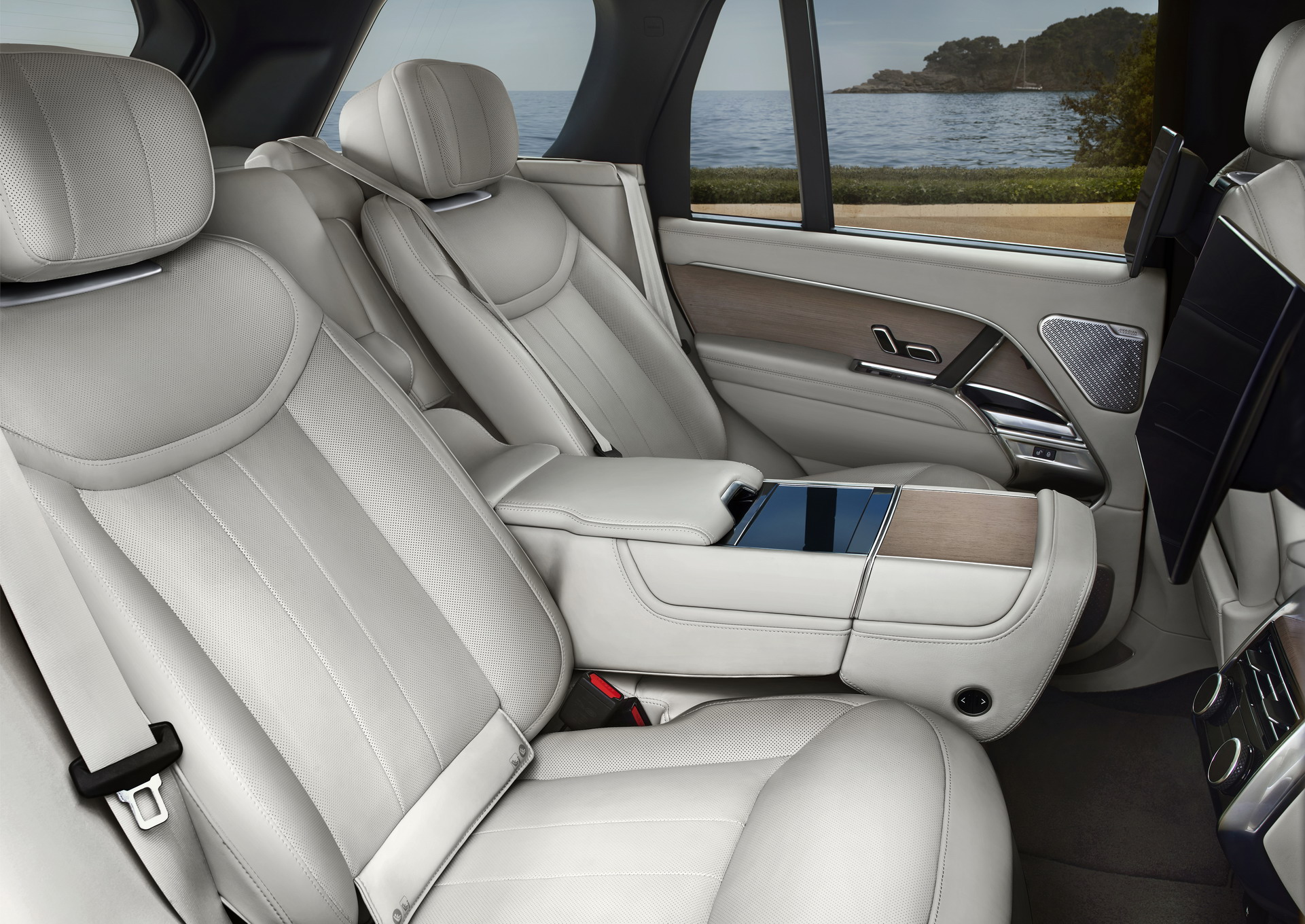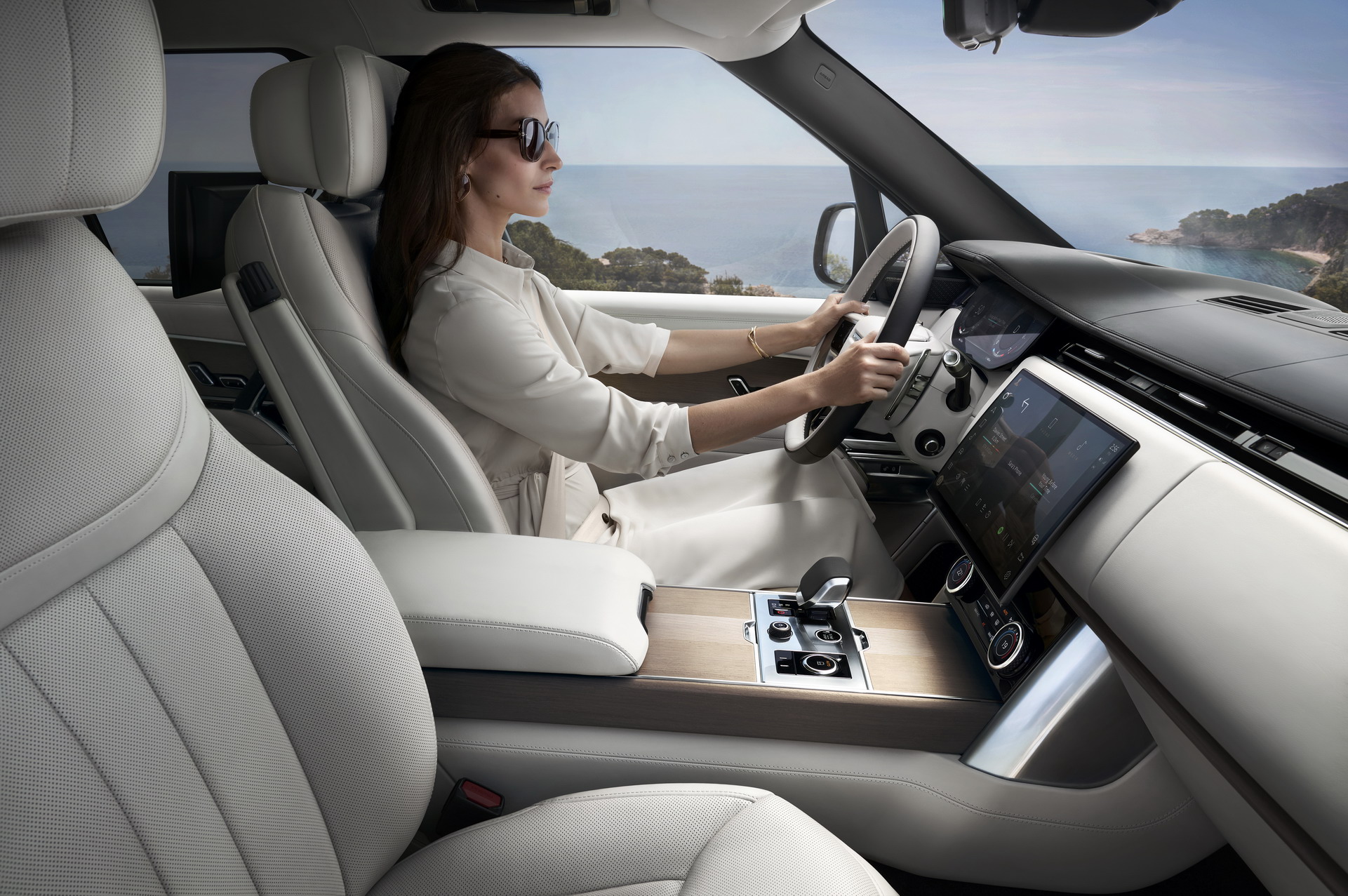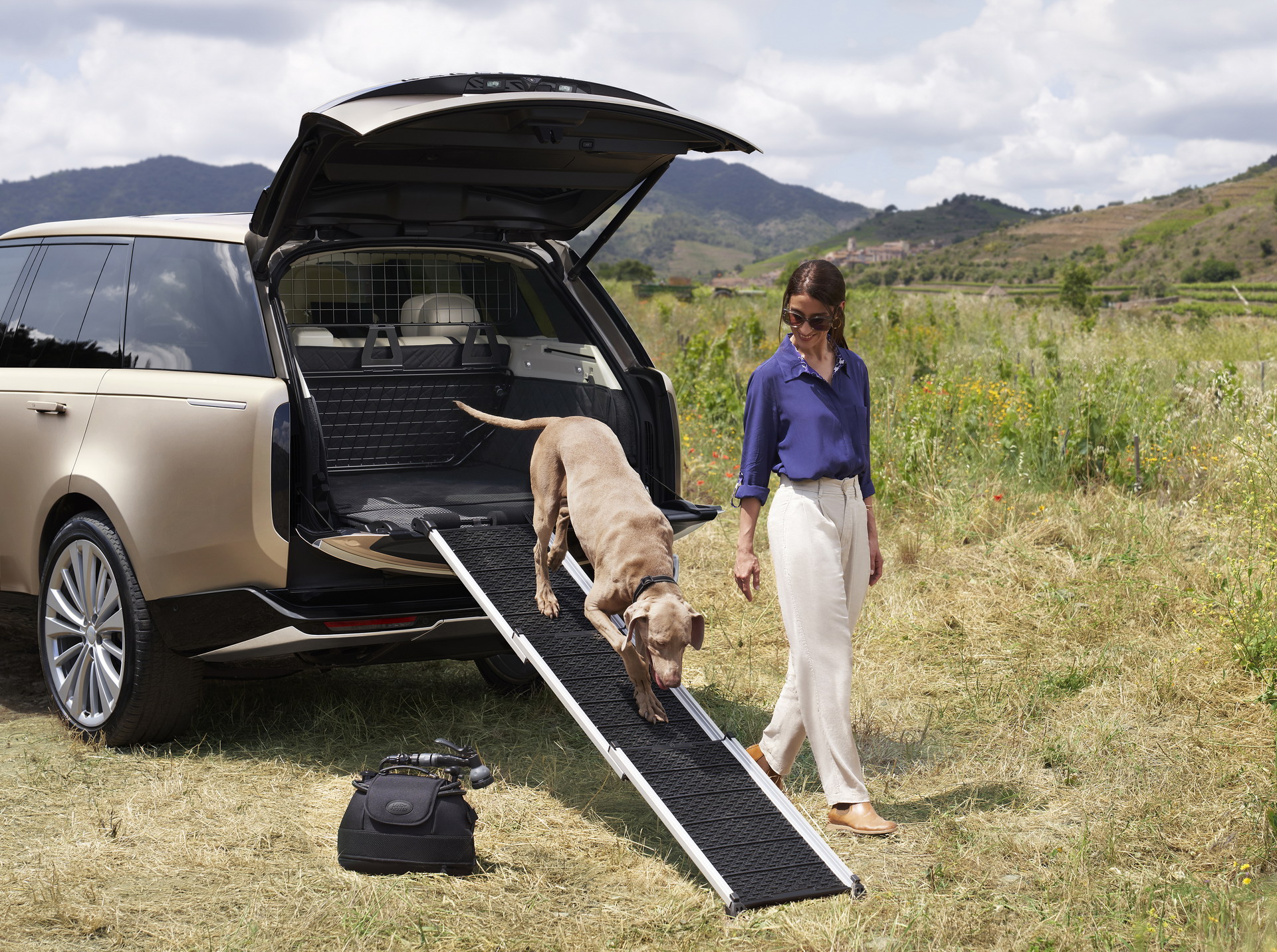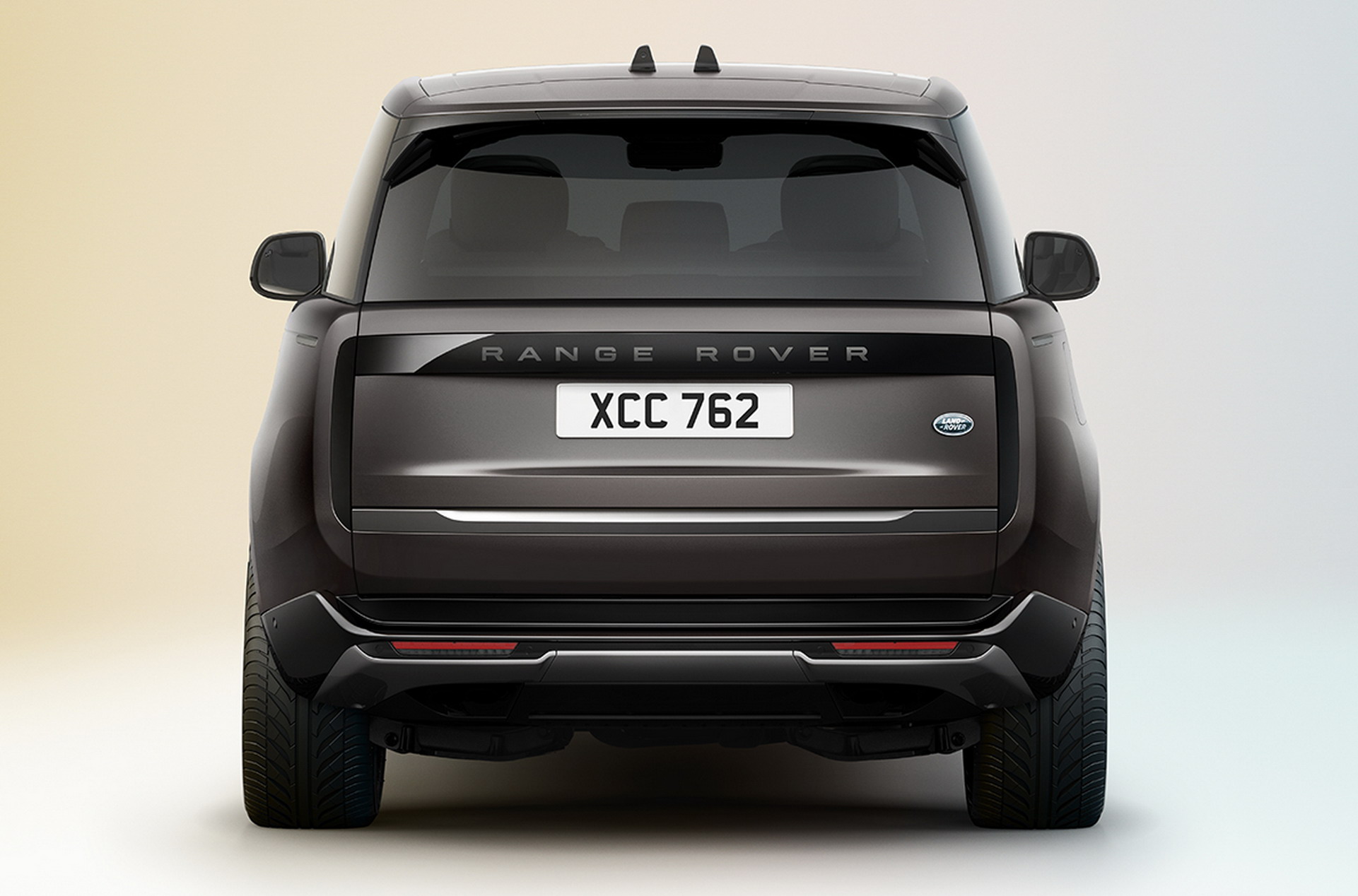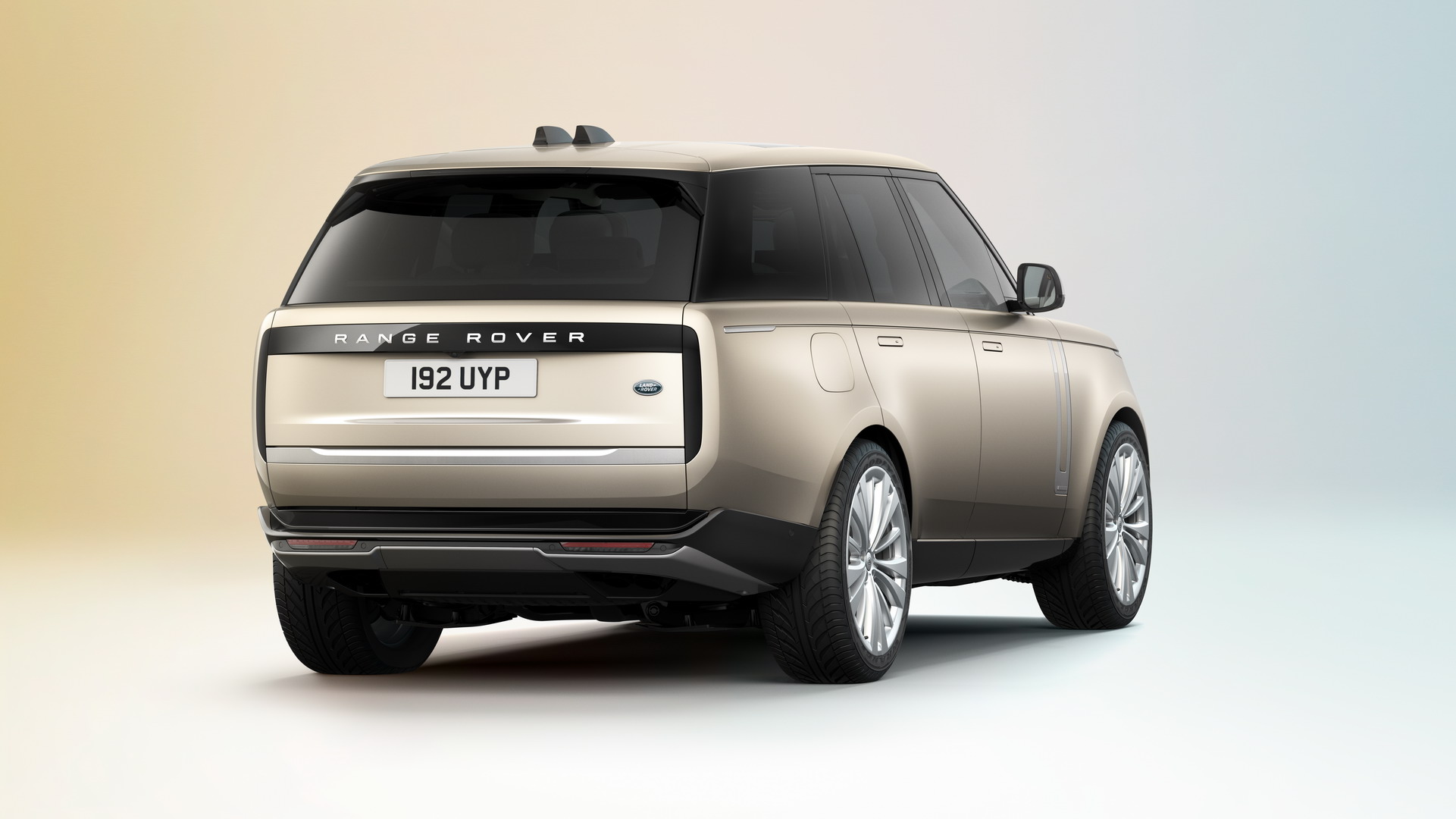You might have already seen the 2022 Range Rover courtesy of a string of leaked images last week, but now we finally get a chance to find out what’s going on under the new car’s elegant, but very similar skin.
The good news, if you’re left slightly disappointed by how little progress the design team has made in the decade since the last Range Rover was launched, is that the engineering team hasn’t held back. There’s a new platform and some new engines, including PHEVs, and an EV option is in the works. But is it enough to help the world’s most famous luxury SUV stay ahead of the competition?
Spot The Difference
First, let’s quickly recap those 2022 Range Rover exterior changes we got our first look at last week. Even with the benefit of having seen those pics, we’d forgive you for missing the detail changes that mark out the new one.
At the front there are new headlights, a shallower grille and a simpler, rectangular lower air intake at the base of the bumper. The profile is also barely tweaked, but you might spot the flush door handles and revised gills at the leading edge of the front doors.
Related: 2023 Range Rover Sport SVR Shows More Of Its Face During Nurburgring Tests
Land Rover is obviously taking the kind of careful evolutionary approach to design Porsche has adopted with the 911, and we can understand that, but even the bolder rear styling, with its slim upright lamp units that merge into a horizontal black panel below the rear window undersells how much more advanced the new Range Rover is compared with the old one below the surface.
In terms of size, the base new car has grown slightly, as have its biggest available wheels – to 23 inches. Overall length is up from 196.9-inches (5000 mm) to 198.8-inches (5052 mm), with the LWB adding an extra 7.9-inches (200 mm), as before. That’s not all crash structure, either: the wheelbase has actually stretched by 3.0-inches (75 mm).
New Platform, More Engines
The 2022 Range Rover is built around Land Rover’s new MLA-Flex architecture, which gives the company’s flagship the ability to accommodate ICE, PHEV and EV powertrains, though not all will be available from launch.
In the U.S. the initial choice will be a simple one between six and eight cylinders, the six being JLR’s P400 mild-hybrid turbocharged 3.0-liter Ingenium inline six familiar from last year’s car. Here, it makes the same 395 hp and 406 lb-ft as before, and scoots the entry-level Rangie to 60 mph (96 km/h) in 5.5 seconds (5.8 seconds to 100 km/h – 62 mph).
More interesting is the meatier P530 V8 upgrade. Pilfered from BMW’s X7 M50i, though Land Rover makes no mention of this in its press material, the 4.4-liter twin-turbo motor is available in one single configuration that sends 523 hp and 553 lb-ft to all four wheels through a ZF eight-speed automatic transmission. That’s good for 0-60 mph in 4.4 seconds (4.6 seconds to 100 km/h).
European buyers also get the option of 296 hp D300 and 345 hp D350 3.0-liter six-cylinder diesels, but oil burners make no appearance in the U.S. lineup this time around. The little guy delivers 479 lb-ft and needs an unimpressive 6.5 seconds to reach 60 mph (6.9 seconds to 100 km/h), so unless your local traffic cops have a vendetta against you we’d probably recommend upgrading: the 345 hp version’s extra 37 lb-ft slashes the 60 mph sprint time to 5.8 seconds (6.1 seconds to 100 km/h).
PHEVs And EVs On The Way
We still don’t know too much about the full EV version of the Range Rover other than it lands in time for the 2024 model year, but we do finally have some details on LR’s plug-in hybrid offerings. Last time out there was only one: an electrically-assisted four-cylinder with a combined 398 hp and pretty feeble 30-mile (48 km) electric range. Now there are two, and they offer up to 62 rated miles (100 km) of emissions-free driving, which Land Rover promises equals 50 genuine miles (80 km).
Both Range Rover PHEVs pair the Ingenium inline six with 38.2 kWh battery and a 105 kW electric motor mounted in the transmission. But while the base P440e makes a combined 434 hp, the P510e starts with a more powerful 395 hp version of the ICE motor that serves up a total of 503 hp by the time the electric horses have been factored in. Land Rover says the P510e can hit 60 mph in 5.3 seconds (5.6 to 100 km/h).
Two interesting points to note here are that the P510e powertrain is not mentioned by Land Rover North America, which won’t be offering a PHEV at all until the 2023 model year, and in Europe the P510e is only available on the short-wheelbase models. And if you want seven seats on your long-wheelbase Rangie, even the P440e PHEV is off the menu.
Rear-Steering Comes Standard
While some of Land Rover’s less expensive cars are available with two-wheel drive, as the standard bearer for the brand the big dog comes standard with all-wheel drive. It’s not always active, however, the front axle disconnecting between 21 mph and 100 mph except in near-freezing temperatures and when traction is limited.
The system can be configured to suit different conditions via the Terrain Response controller. Also standard is an active rear differential to help in the rough, plus rear-wheel steering, which could be useful when off-roading, but whose real purpose is to make the Range Rover more maneuverable in town.
Land Rover says the Range Rover’s rear-wheel steering system can provide 7 degrees of steering angle at low speeds to give the newcomer a turning circle of 36 ft (11 m), the smallest of any car in the company’s line-up. At higher speeds the rear wheels turn the same direction as the fronts to add stability.
Related: Everything We Know About The 2024 Land Rover Discovery Sport
Air springs, which have been a Range rover feature since ’92, make a return and are mated with adaptive dampers. But this time they’re teamed with 48v electronic roll control, the kind of system that’s been fitted to rival SUVs before, but makes its LR debut here. The suspension even uses navigation data to “read” the road ahead and prime the chassis hardware for curves.
We’ve no doubt the new Range Rover can hold its own off road, just like the Defender can, and the 35.4-inch (900 mm) wading depth should be more than most sane people need. But it definitely feels like Land Rover is embracing the reality that this is a luxury car that happens to be an SUV rather than the other way around, and has put its energy into making it great on the road.
From SE To First Edition in $60,000
A four-tier trim lineup consisting of SE, HSE, Autobiography and First Edition makes buying a 2022 Range Rover fairly straightforward, provided you’ve got access to $104,000/£98,000. That’s how much you’ll pay for the entry-level SWB SE paired with the mild-hybrid six, though Brits have the option of saving £3600 by swapping out the gas motor for the D300 diesel.
Sticking with SE trim and the Ingenium six, but upgrading to seven seats and the LWB body, adds $6,000/£5,200, the cheapest V8 costs $118,700 (or a steep £129,300 in the UK because it’s only available on Autobiography and up), and a fancy First Edition long wheelbase model will set you back $163,500/£137,800. Prices for the PHEV are still to be confirmed.
Range Rover SV Is Even More Opulent
Arriving a little later to head the lineup, and take on the new breed of super SUVs whose prices far exceed those of even the First Edition, is the four-seat Range Rover SV from Land Rover’s Special Vehicle Operations department.
Available in both wheelbases and a choice of “Serenity” and “Intrepid” themes that allow it to be as tasteful or as tasteless as you want, it’ll come with 24-way massage seats, ceramic and metal trim pieces and an electrically deployable table that rises from the center console. You can only get it with the BMW-derived V8 and though we don’t know how much it’ll cost, we’re guessing it’ll be close to, if not more than, $200k/£170k.
Limousine Luxury
The Range Rover SV’s appeal isn’t just anchored to its extra equipment, but the extra personalization opportunities that come from a hand-finished product. Most customers are likely to find the regular Range Rovers more than luxurious enough.
Inside, you get a 13.7-inch digital gauge cluster and 13.1-inch Pivo Pro infotainment screen up front that features haptic feedback for the first time. And in the back there’s the option of 11.4-inch touchscreens. Other gadget headlines include Amazon Alexa voice AI, over-the-air update capability, and active noise cancellation via the Meridian sound system that comes with the high trim grades, including the First Edition.
Electrically opening and closing doors join the options list, and they even have hazard avoidance technology to make sure you don’t swing them into another car when you activate them from the touschscreen. And should you find yourself at the polo match with nowhere to sit, the optional Tailgate Event suite adds lighting, audio features and leather cushions to the trunk space. It probably works fine for eating burgers from a greasy shack at the side of the road, too.
U.S. Sales Start Next Spring From $104,000
The 2022 Range Rover is available to order now with European deliveries beginning slightly earlier than those in the U.S, which kick off next spring. That means the old car will temporarily remain on sale in North America as a 2022 model, potentially causing a world of confusion. Our advice: take a look around the back end to make sure you’re getting the new one.




